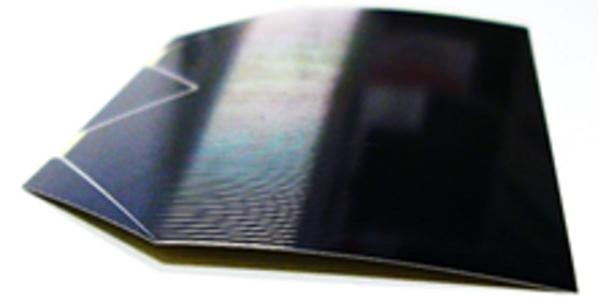Next Generation Solar Cells with an End of Life Efficiency of 30%

Further development of the technology building blocks required for the most promising next generation solar cell options. Prototype development of at least one cell option reaching 30% EOL efficiency.
The state-of-the art GaInP/GaInAs/Ge triple-junction solar cell technology has reached its practical efficiency limits of around 30% beginning of life (BOL) and an excellent value of 26.5% end of life (EOL). A significant efficiency increase in the order of 3-5% absolute can only be realised by a change of the cell concept. Currently, different options/concepts have been identified which have the potential to arrive at BOL efficiencies clearly beyond 30% which are the UMM (upright metamorphic), IMM (inverted metamorphic), LM (lattice-matched) "conventional" four-junction cell, LM solar cell based on dilute nitride materials and SBT (semiconductor bonding technology) concepts. The differences of the concepts are mainly manufacturing complexity which directly translates into cost, and their maximum efficiency potentials. In other words some of the concepts can be realised easier and cheaper than others but there is not much scope for an additional efficiency increase in the long term, while others are more expensive and require more development effort but have also the potential of an efficiency increase beyond the next target of 33-35%.In the TRP activity "Next generation Solar Cells with 33% Target Efficiency" (ESA Co. 4000104852) the technology building blocks of all concepts were being developed in a first phase. However an increase to a higher maturity level in a second phase is needed for the solar cell concept that shows the highest potential to reach the target of arriving at 33% BOL at the end of the activity. In the mid and long term, though, a solar cell is required with a guaranteed EOL efficiency of 30%. Therefore, the scope of this activity is to increase the maturity level of all the different technology building blocks of all next generation solar cell concepts showing an EOL efficiency potential of 30% and more. These technology building blocks cover all the full production line of solar cell starting from the source materials like e.g. the substrate, the optimisation of new semiconductor materials in the solar cell epitaxy, the cell technology, lift-off and layer transfer processes. Elaborated in more detail the areas that need to be covered are:1. Epitaxy of semiconductor material: For each of the different concepts UMM, IMM, the LM concepts and the semiconductor bonding concept, new semiconductor materials have to developed which are a different combination of elements of the 3rd and 5th group of the periodic system. Some of these combinations are known to be difficult to manufacture in a very high quality and a dedicated development effort is required. Furthermore, some concepts are based on semiconductor materials which - in contrast to the current solar cell - naturally do not fit together since their lattice constant are different. Thus, again certain buffer structures have to be developed that account for the this lattice-mismatch of the different materials in the cell structure.2. Handling and technology of ultra-thin solar cells: Substrate removal and layer transfer processes are needed to be developed for at least part of the different concept - the IMM and the semiconductor bonding technology concepts. These building blocks not only need to be developed but also need to be implemented in an industrial framework being also cost effective. These building blocks might be also applicable to the other concepts especially when thinking of ultra-thin cells. Additional building blocks in the area of the "technology" are the development of broadband anti-reflective coatings. This applies not only to the solar cell but also to the cover glass.3. Lift-off and substrate reuse: Ideally the substrate removal is performed by a lift-off process which allows for subsequently reusing the substrate. Thereby, the cost could also be significantly reduced. These building blocks are most probably required for the IMM and the semiconductor bonding technology concepts in order to be cost effective. But also for the other concepts these building blocks would be advantages when ultra-thin cells are requested to achieve a higher specific power (power/mass).
